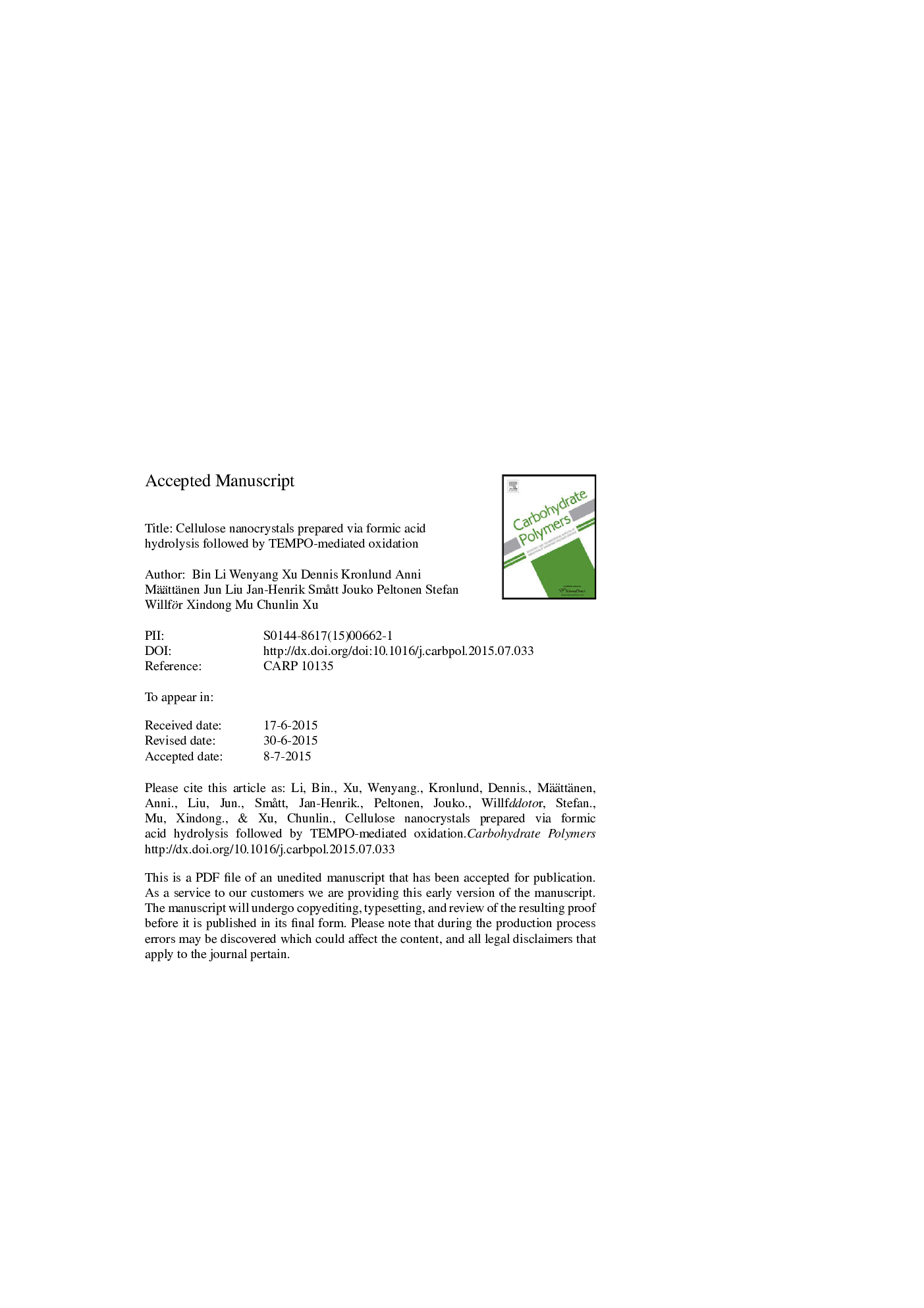| Article ID | Journal | Published Year | Pages | File Type |
|---|---|---|---|---|
| 7787890 | Carbohydrate Polymers | 2015 | 30 Pages |
Abstract
Cellulose nanocrystals (CNCs) as a renewable and biodegradable nanomaterial have wide application value. In this work, CNCs were extracted from bleached chemical pulp using two stages of isolation (i.e. formic acid (FA) hydrolysis and 2,2,6,6-tetramethyl-piperidine-1-oxyl (TEMPO) mediated oxidation) under mild conditions. In the first stage, FA was used to remove hemicellulose, swell cellulose fibers, and release CNCs. The FA could be readily recovered and reused. In the second stage, the CNCs isolated by FA were further modified by TEMPO-mediated oxidation to increase the surface charge of CNCs. It was found that the modified CNCs with more ordered crystal structure and higher surface charge had better redispersibility and higher viscosity in aqueous phase. Therefore, the modified CNCs could be more effective when used as rheology modifier in the fields of water based coating, paint, food etc.
Related Topics
Physical Sciences and Engineering
Chemistry
Organic Chemistry
Authors
Bin Li, Wenyang Xu, Dennis Kronlund, Anni Määttänen, Jun Liu, Jan-Henrik SmÃ¥tt, Jouko Peltonen, Stefan Willför, Xindong Mu, Chunlin Xu,
